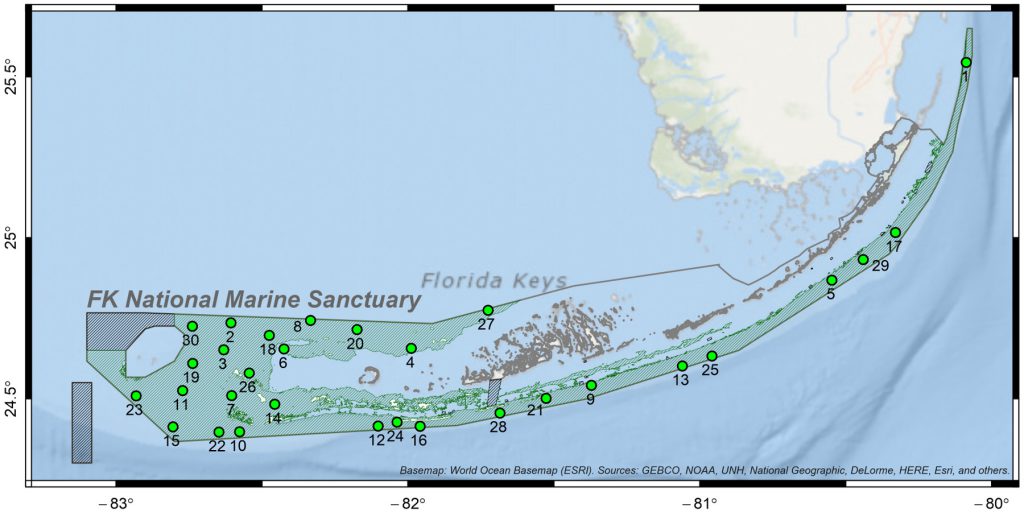NCCOS scientists completed a study of the soft-bottom habitats in offshore areas of the Florida Keys National Marine Sanctuary (FKNMS). While FKNMS is known for its coral reefs and extensive seagrass beds, soft-bottom sediments are very common in the sanctuary. These habitats support diverse communities of benthic (bottom-dwelling) invertebrates living in the sediments, which play vital roles in detrital decomposition, nutrient cycling, and energy flow to higher trophic levels. The sediments also represent a sink for chemical contaminants, and the condition of the benthic community can provide a reliable and sensitive indicator for evaluating the biological significance of sediment-associated stressors.

The research team collected samples of water, sediment, and biota at 30 randomly-selected sites, primarily deeper, offshore, soft-bottom habitats of the sanctuary (see image to the right). Although some of the toxicity assays indicated a positive (toxic) response, sediment concentrations of trace metals, hydrocarbons (PAHs), pesticides, and PCBs were below upper sediment quality guideline (SQG) values associated with a higher likelihood of toxicity to benthic infauna, and porewater ammonia nitrogen concentrations were within acceptable levels. Hence, the causes of toxicity in these samples is unknown, and may be due to other, unmeasured stressors or confounding factors. The researchers found no association of low values of benthic diversity and abundance associated with indicators of poor water or sediment quality. However, sediment concentrations of PCBs at one site (station 29) off Conch Reef exceeded the lower SQG, below which toxic effects to infauna are considered unlikely. The authors of the report recommend a follow-up study to determine the local spatial distribution, and possibly the source, of elevated PCBs at this site. Additionally, since the study was focused mainly on deeper, offshore portions of FKNMS, a similar companion study of inshore areas would be valuable, as it would provide complementary information that could contribute to a more complete characterization of the sanctuary.
The study, developed in collaboration with FKNMS, is part of a series of offshore surveys assessing ecological conditions and stressor impacts throughout coastal shelf waters of the continental U.S. and Gulf of Mexico. Study results will provide baseline information and help to address a need stated in the most recent FKNMS Condition Report to characterize contaminant concentrations in sanctuary habitats.
